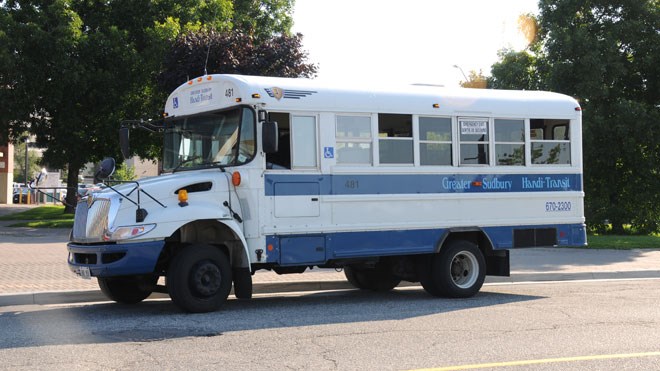Extending the boundary of the city's Handi-Transit service would almost require “a fleet of new buses,” members of the city's operations committee heard Monday.
Currently, residents who qualify for the service must live within 400 metres of a bus route. However, allowances are made for people who live within three kilometres of a route anywhere within city limits if there is a bus available.
They are charged $1 per kilometre for the service.
In reality, however, the report says no buses are available for people outside the 400-metre limit when demand is at its highest.
Roger Sauve, the director of Sudbury Transit, said demand is high with the current system, demand for which has grown so fast, it has exceeded its budget by $100,000-$200,000 a year. It currently sits at around $2.7 million.
“It already provides service to a considerable portion of the city,” Sauve said.
“Even if we wanted to, we don't have the buses, is that correct?” asked Ward 12 Coun. Joscelyne Landry-Altmann.
“It would almost take a new fleet of buses to provide (extended) service,” he said. “The current system we have is at capacity.”
Landry-Altmann wanted a report on how much revenue could be generated by selling ads on the Handi-Transit buses, something she's talked about in the past.
Sauve said they have looked into it, but the system is separate from the main Sudbury Transit buses. Not only are the buses smaller, there are different services providers for the 12 vehicles.
“We did investigate to see what the possibilities are,” he said. “There wasn't a lot of interest in that.”
But Landry-Altmann wanted a report anyway, arguing it could be a way to soften the impact of the rising costs of Handi-Transit.
“It may not be of interest to them, but it is of interest to the city,” she said.
\
Infrastructure GM Tony Cecutti said that the city signed a contract recently with the Handi-Transit operator, so they can't just insist they accept advertising. But even if they could, there's not much room or demand for the spaces.
“That's the feedback we're getting from service providers,” he said.
Committee Chair Jacques Barbeau said the committee would be in a better position in a year from now, when a review of eligibility requirements is complete. At a recent transportation conference, he said challenges with Handi-Transit was a common theme.
“We're not the only community facing that challenge,” he said.
But if they are able to refine the eligibility process and encourage more riders to use traditional transit, extending the boundaries may not be as large a challenge.
“Maybe in a year, it would only take three buses to extend that service.”
Handi-Transit costs have been rising steadily in the last 10 years, since 2005 when they were integrated with Sudbury Transit, meaning they operated the same hours and routes.
According to a 2011 audit by Auditor General Brian Bigger, Handi-Transit use increased by 26 per cent between 2005 and 2009. The net cost to the city increased by more than $1 million in that time, rising to more than $2.7 million.
Last year alone, the Handi-Transit budget came in $215,000 higher than forecast.
